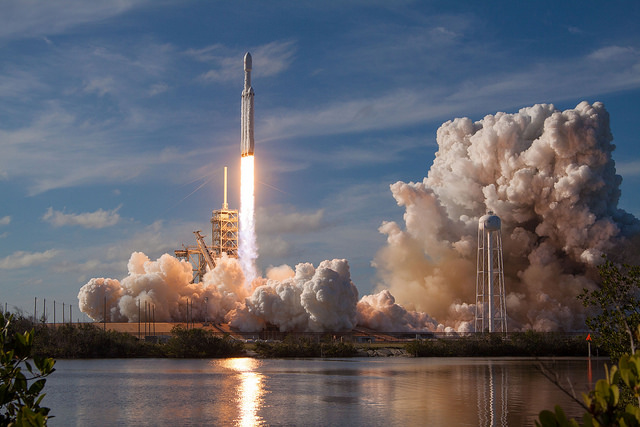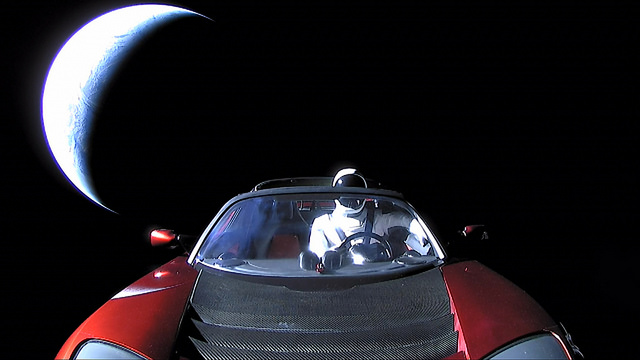On February 6, 2018, the Falcon Heavy rocket passed its first launch test, lifting off from NASA’s Kennedy Space Center in Florida atop a bright pillar of fire. Built by the California-based, private aerospace company SpaceX, the Falcon Heavy is the most powerful launch vehicle since NASA’s Saturn V took humans to the Moon nearly a half-century ago. The Falcon Heavy is also the strongest rocket ever debuted by the commercial space sector. In recent years, private industry has started to play a major role in the access and utilization of space, a realm that had long been only available through governmental agencies. See also: Astronautical engineering; Moon; Rocket; Rocket propulsion; Space flight

SpaceX has led the commercial space movement in terms of launch vehicles, with its smaller Falcon 9 rockets handling resupply runs to the International Space Station and satellite deployments since 2010. The leader of SpaceX, billionaire entrepreneur Elon Musk, started the company in 2002 to bring down prohibitive launch costs in the short term and, in the long term, send humans to Mars. See also: Mars; Space station
The Falcon Heavy consists of three Falcon 9 rockets, with two serving as lateral boosters to the central rocket, above which a second-stage rocket and payload are housed. The combined rockets’ 27 engines generate around 2,800 kN (5 million lbs) of thrust at liftoff, sufficient to deliver payloads of 63,500 kg (140,000 lbs) into space. See also: Rocket staging; Thrust
During the test launch, the lateral boosters detached from the main rocket and then successfully landed themselves back at the launch zone in Cape Canaveral, as planned. The reusable nature of SpaceX’s rockets adds to their cost-effectiveness compared to conventional, single-use rockets. However, the central rocket failed to land on a barge in the Atlantic Ocean; the failure was the only glitch in the overall test launch, which Musk had cautiously given only a 50/50 chance of success. See also: Ocean
The Falcon Heavy demonstration had an element of whimsy as well. Instead of a so-called mass simulator typically used as a stand-in for a genuine payload, Musk chose an unexpected object: his own cherry-red convertible made by Tesla Motors, another company he founded. The Falcon Heavy sent Musk’s car into an orbit looping out past Mars; the orbit is expected to persist for hundreds of millions of years. Occupying the driver’s seat is a SpaceX spacesuit-clad mannequin, dubbed Starman, photos of which have captured the public’s attention, offering an oddball display of technological prowess and ingenuity in the final frontier. See also: Automobile






